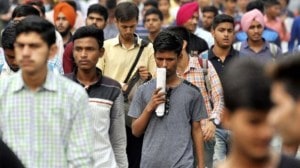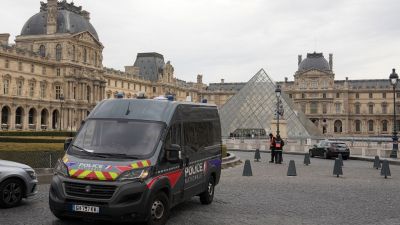Memorial for quake victims in China’s Sichuan inspires Veer Balak Smarak, Smriti Van in Kutch
On Sunday, Prime Minister Narendra Modi will inaugurate a memorial dedicated to them that is a project inspired by the memorial at Sichuan in China after the 2008 earthquake in which thousands were killed, including 1,000 students and teachers of Beichuan Middle School.
 The Veer Balak Smarak at Anjar in Gujarat will commemorate 185 children and 22 teachers who died as a 6.9 magnitude earthquake occurred on January 26, 2001. (Express Photo)
The Veer Balak Smarak at Anjar in Gujarat will commemorate 185 children and 22 teachers who died as a 6.9 magnitude earthquake occurred on January 26, 2001. (Express Photo)On the morning of January 26, 2001, schoolchildren from 18 government primary schools of Anjar town in Kutch district were marching with tricolours to celebrate the 52nd Republic Day when buildings came crashing down on them as an earthquake measuring 6.9 on the Richter scale struck. As many as 185 children and 22 teachers died.
On Sunday, Prime Minister Narendra Modi will inaugurate a memorial dedicated to them that is a project inspired by the memorial at Sichuan in China after the 2008 earthquake in which thousands were killed, including 1,000 students and teachers of Beichuan Middle School.
The memorial built in Anjar, called the Veer Balak Smarak or brave children’s memorial, will be part of several projects that Modi will inaugurate in Kutch that includes the Smriti Van in Bhuj — a memorial to the 12,932 people killed in the epicentre of the earthquake in Kutch district, also inspired from Sichuan.
In 2004, Modi, then chief minister of Gujarat, announced the memorial that has now been built by the state roads and buildings department at a cost of Rs17.50 crore. Cutouts of children are installed in the Veer Balak Smarak, while the Beichuan memorial has statues of children running out of a building.
After his China visit in 2012, then CM Modi had sent Kutch District Development Officer Harshad Patel to visit Sichuan province to study earthquake memorials, museums and craft villages built after the 2008 Wenchuan earthquake of 8.1 magnitude.
A four-member team led by Patel visited Sichuan and documented details for the Smriti Van to be constructed on the Bhujiyo hill of Bhuj to commemorate the 2001 Kutch earthquake.
Following the visit, Patel prepared a report by mobilising local teachers and social organisations who had contacted survivors and families of victims to document events and experiences that could be a part of the Smriti Van project.
Recalling the presentation he gave to the CM in 2013, Patel, who is now Relief Commissioner, told The Indian Express that Modi went through it “keenly and patiently”.
On the lines of Sichuan province earthquake where relic sites, including Beichuan County Government, Rural Credit Union and Vocational School, were protected, the 2013 report also suggested setting up of an “earthquake village” and memorials, especially in Adhoi and Bhachau that suffered major devastation.
“Keep it as it is today as it has a great capacity to be established as an earthquake memorial and should be developed as an earthquake village,” says an instruction alongside pictures of damaged houses and a temple in the presentation.
The Veer Balak Smarak, set up on the lines of the Relic Site of the school in Beichuan, has a memorial and a museum.
The memorial section at Anjar has a wall with names and sketches of the victims, inspired from Beichuan, and a giant “prakashpunj” (bulb) that will be visible in the whole town.
The museum has seven galleries, the first of which has photos and memories associated with the children and teachers. The second recreates the quake and how the children were trapped in rubble, while the third contains an earthquake simulator that will give visitors a feel of an earthquake of 6.9 magnitude. The fourth explains the process of earthquakes and why they occur. There is also a gallery where visitors can pay their tribute to the victims through digital media.
Ahmedabad-based Vastushilp Consultants, founded by celebrated architect BV Doshi, has designed the memorial part of the Smriti Van, while Design Factory India (DFI) has designed the museum and interior of the project with KPMG serving as the project management consultant.
Rajiv Kathpalia, architect from Vastushilp Consultants, who was also part of the four-member team that visited China, said that the the memorial idea was initiated in 2004. “We were given a brief by then CM Narendra Modi to plant a tree for each victim,” Kathpalia said, adding, three lakh trees were planted to form the Smriti Van in Bhuj, located at the Bhujiyo Hill where the Bhujiyo fort was also restored, as part of the project.
Newsletter | Click to get the day’s best explainers in your inbox
The initial site identified for the “self-sustaining forest” was Tapkeshwari, that was changed to Bhujiyo Hill in 2010.
“The plan right from museum in one end to the sun point at the other was conceptualised and designed in such a way that it is with the nature,” said Kathpalia.
The initial design of the project, at an estimated cost of Rs 375 crore, has had several additions and modifications over nine years since 2013 when actual work started on the site.
The Smriti Van, spread across 470 acres, of which phase 1 is near completion on 170 acres of land has 1,020 names engraved of the 12,932 earthquake victims.
An official release said 100 family members of the victims will be present when the PM will inaugurate the Veer Balak Smarak.







